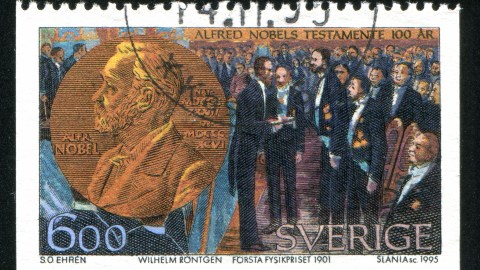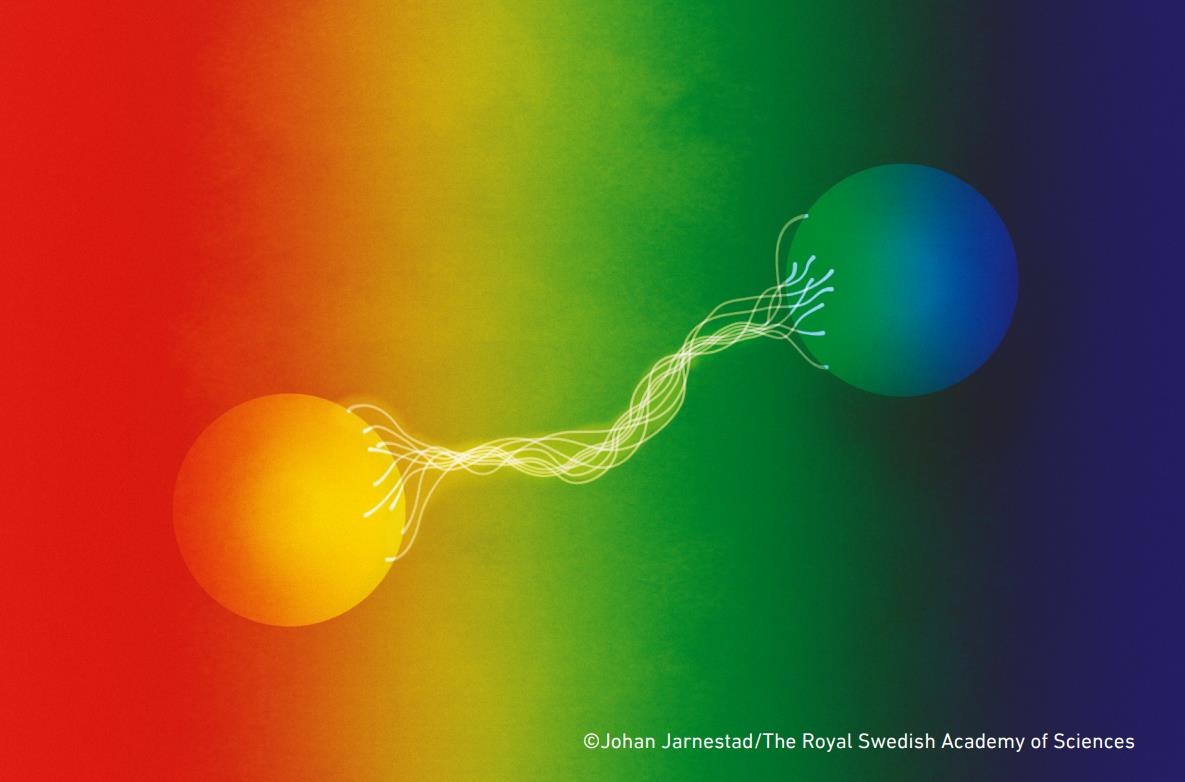The worst Nobel Prizes ever awarded in science (and one in literature)

- The Nobel Prize is typically handed out for great scientific work, but some prizes backfired.
- A few prizes were given out for discoveries that turned out to be woefully incorrect.
- One was awarded for a barbaric procedure that incapacitated thousands of people.
The Nobel Prizes are among the most prestigious awards in the world. Those who win them are typically legends in their respective fields. However, awards are given out by human beings, and human judgment is imperfect. Some of the choices the various Nobel Committees have made over the years were highly controversial or even universally regarded as mistakes. Here are a few of the worst Nobel Prizes of all time, in no particular order.
Johannes Fibiger: Physiology or Medicine, 1926
Nobel Prizes used to be awarded fairly quickly after the discovery, achievement, or event that prompted them. The instructions left by Alfred Nobel seemed to warrant this speed. However, this has occasionally led to awards for discoveries that later turned out to be bunk. Perhaps no case of this is clearer-cut than the 1926 prize in medicine, which was awarded “for [Fibiger’s] discovery of the Spiroptera carcinoma.”
In brief, Dr. Fibiger’s research appeared to show that a certain roundworm parasite could cause cancer in rats. However, later experiments proved that the “cancers” he claimed to have observed were lesions caused by insufficient vitamin A. The roundworms he examined didn’t cause cancer, although certain parasites are known to do so.
The award is even stranger given the lack of an award in 1925. Fibiger made the shortlist alongside Dr. Yamagiwa Katsusaburō, both for work in determining causes of cancer. However, it was decided that neither of their publications was enough to warrant a prize at that time. Dr. Katsusaburō did not share the 1926 award but ended up being the one whose work proved accurate. Coal tar is carcinogenic.
The Nobel Foundation does not rescind prizes. Fibiger is still listed as a winner despite the refutation of his work.
Bob Dylan: Literature, 2016
Bob Dylan was awarded the prize “for having created new poetic expressions within the great American song tradition.” Many poets have won the prize before, but Dylan’s song lyrics are typically thought to be in a different class than the poetry of Rabindranath Tagore, Pablo Neruda, or T.S. Eliot. The New York Times called the selection “radical,” as no musician had ever won the award before.
While the literature prize cannot be awarded to everyone who deserves it, commentators pointed out how Dylan is in the same generation as writers like Phillip Roth, John Updike, and Joyce Carol Oates — none of whom won the prize for their work. Scottish novelist Irvine Welsh commented negatively on the award, saying, “I’m a Dylan fan, but this is an ill-conceived nostalgia award wrenched from the rancid prostates of senile, gibbering hippies.”
However, both Oates and Roth were on the committee that awarded it. Dylan’s acceptance speech (which was delivered by the U.S. ambassador to Sweden, as Dylan chose not to attend) famously dove into works of literature that had made a great impression on him. Many writers, including Salman Rushdie, defended Dylan’s selection.
James Watson, Francis Crick, and Maurice Wilkins: Physiology or Medicine, 1962
Sometimes, the most controversial thing about a prize is who didn’t get it. That is the case for the 1962 prize for the discovery of the “molecular structure of nucleic acids and its significance for information transfer in living material” — that is, the structure of DNA.
Only three people can share a single Nobel prize, a rule described as archaic given the contemporary nature of scientific research. Posthumous nominations are not allowed (though this rule was not official until 1974). So when the prize for the discovery of DNA and its structure was awarded, it went to Watson, Crick, and Wilkins to the exclusion of all others involved.
Infamously, this included Dr. Rosalind Franklin, whose work in X-ray diffraction produced images of DNA that were vital to the discovery of its double helix structure. The winners failed to cite Franklin’s work in their initial publications, and Watson infamously portrayed her negatively in his book The Double Helix. She was never nominated for a prize, died in 1958, and is widely thought to have been a victim of sexism. One member of her research team, Dr. Aaron Klug, won the Nobel Prize in chemistry in 1982, continuing the work he began with her — suggesting that her work was indeed prize-worthy.
Enrico Fermi: Physics, 1938
Sometimes the problem with a scientific finding isn’t that it’s wrong; it’s that the evidence for it doesn’t support the finding. This was the case with the 1938 prize in physics awarded to Enrico Fermi “for his demonstrations of the existence of new radioactive elements produced by neutron irradiation, and for his related discovery of nuclear reactions brought about by slow neutrons.”
Fermi won the prize for an experiment he did in 1934, which appeared to demonstrate how previously unknown elements could be created by bombarding uranium atoms with neutrons. These new elements, named “ausonium” and “hesperium,” were given atomic numbers 93 and 94, respectively.
However, he didn’t discover any new elements. Instead, he managed to do nuclear fission, in which heavy uranium atoms split to become lighter elements. He was unaware of this. The “elements” he found were just a mixture of barium and other known elements. The real elements 93 and 94, neptunium and plutonium, would be discovered later. Alternative explanations for what Fermi saw were advanced as early as 1934, but it wasn’t until after Fermi was awarded his prize that nuclear fission was properly discovered.
Fermi went on to oversee the first artificial nuclear reactor and the first self-sustaining nuclear chain reaction at the University of Chicago as part of the Manhattan Project. He also came up with a famous paradox concerning extraterrestrial life. The 1944 prize in physics went to Otto Hahn for his work in discovering fission, but Fermi may have deserved an award for that experiment too.
António Egas Moniz: Physiology or Medicine, 1949
Dr. Moniz was a Portuguese renaissance man who turned to medicine full-time after retiring from politics. He won the Nobel Prize “for his discovery of the therapeutic value of leukotomy in certain psychoses” — that is, for inventing a surgical method for treating mental illness by cutting the connections between different parts of the brain. Initially known as a “prefrontal leukotomy,” American doctors refined the technique and renamed it the “lobotomy.”
The surgery was once terrifyingly popular. An estimated 40,000 Americans had the operation, as did 17,000 people in England. Many of these operations were carried out on children or those who were unable to make their own medical decisions, such as Rosemary Kennedy and Howard Dully.
While the surgery reduced the symptoms of anxiety, depression, and psychosis, cutting into the frontal lobe left many patients devoid of personality. Those who had the operation were often described as “dull, apathetic, listless, without drive or initiative, flat, lethargic, placid and unconcerned, childlike, docile, needing pushing, passive, lacking in spontaneity, without aim or purpose, preoccupied and dependent.” The operation incapacitated Ms. Kennedy for life.
Alternatives, often in the form of pharmaceuticals, became available in the early 1950s. The USSR banned the practice in the same decade over moral concerns. By the 1970s, most nations had outlawed the procedure, though it continued until the 1980s in France. While concerns about the practice existed since its introduction, it is now universally deemed a barbaric relic of the past. Nobel Laureate Dr. Torsten Wiesel deemed Dr. Moniz’s award an “astounding error of judgment.”
As stated above, the Nobel Foundation does not rescind prizes. Their website includes a section defending the surgery as the best treatment available at the time.
The worst Nobel Peace Prizes
There are so many awful Nobel Peace Prize Laureates that an entire article could be dedicated to that. We’re working on one.





